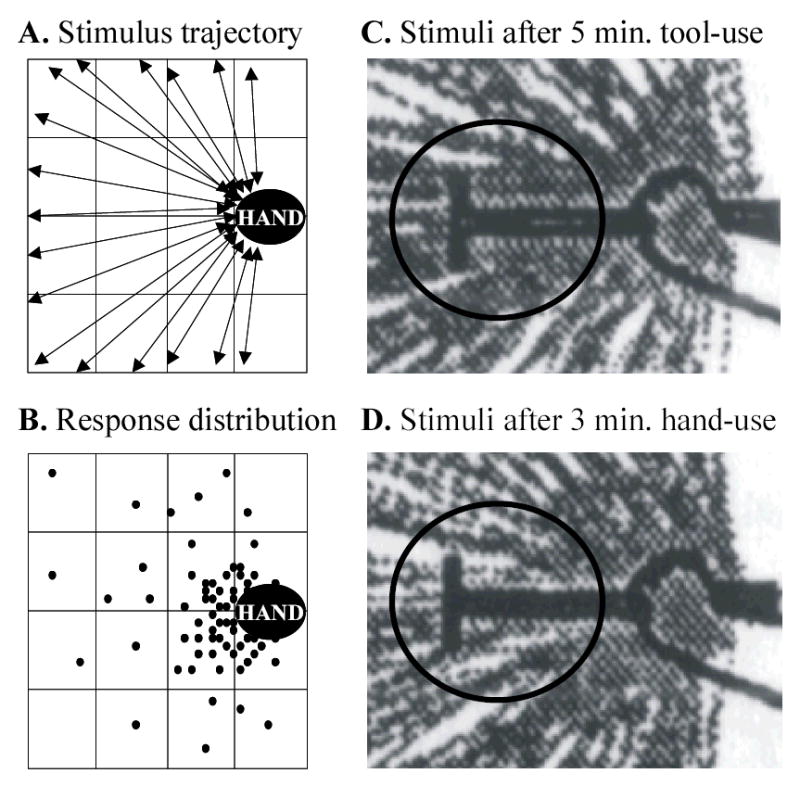Figure 2.

The stimuli delivered and responses obtained in Iriki et al.’s (1996a) study of tool-use, the body-schema, and peripersonal space. A. Visual stimuli were moved either toward or away from the hand in a centripetal or centrifugal fashion respectively (as shown by the double-headed arrows). Note that the hand area was stimulated much more frequently than any other part of the visual field. B. Filled circles represent the position in the visual field where the visual stimulus was when the neuron increased its firing rate to above 3 action potentials/second. C. The trajectories of stimuli (grey lines) presented after 5 minutes of tool-use activity (experimental condition). The monkey’s hand is on the right, and the tool (dark ‘T’-shape) extends toward the left. D. The trajectories of stimuli presented after 3 minutes of retrieving food using only the unaided hand, but studied with the tool held in the monkey’s hand (control condition). Note that the frequency and density of stimulation in the critical part of the putative visual receptive field (i.e., around the tip of the tool, shown by the black ellipse) does not seem to be comparable across the two conditions. The proposed ‘extension of visual receptive fields’ may in fact therefore be an artifact of the method of stimulus presentation. (Panels C and D were digitized and adapted from Iriki et al., 1996a).
